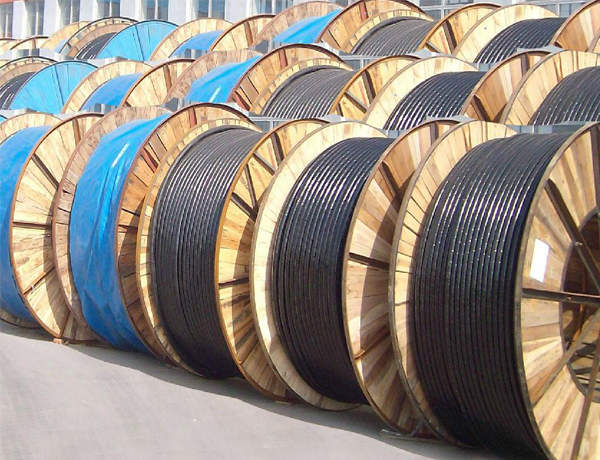For halogen-free low smoke flame retardant sheath, the tensile strength and elongation at break decreased seriously after immersion.
Among the performance requirements of LST1/LST3/LST4 halogen-free low smoke flame retardant sheath in BS7655-6.1 standard, the strength and elongation change rate of LST1/LST3/LST4 type halogen-free low smoke flame retardant sheath is not more than (+30%) after being immersed in water at 70 (+168 h); the LSHF/ST1 type sheath in TM7 type and IEC62821 type sheath type in EN50525 standard also has this requirement; this requirement is also applied to the national standard of halogen-free low smok
ST8 halogen-free sheath material in GB/T12706 standard uses weight change after immersion to evaluate the immersion performance of the material, but the sheath required by this requirement can not necessarily pass the above immersion hot water test.
By adjusting the formula, halogen-free low smoke flame retardant sheath material can pass the hot water immersion test.
The long-term service performance of halogen-free low smoke sheath material will be seriously affected if the tensile strength and elongation at break change greatly after immersion, which should be highly valued by the industry.
For halogen-free low smoke insulating materials, the insulation resistance decreases greatly after immersion.
The insulation requirements of TI6 and EI8 in EN50525 standard are through 220V DC resistance test in water of 60 240h 10g/L NaCl; the rated voltage of 0.6kV in EN50264 locomotive cable standard is through 1.5kV DC resistance test in 85 240h 3% NaCl water; the insulation requirements of 2PfG1169/08.2007 solar cable are through 900V DC resistance test in water of 85 240h 3% NaCl; and the outdoor cable of UL standard is insulated from long-term water. There are strict requirements for the change of edge resistance.
This performance requirement examines the water resistance of insulation.
Similarly, the halogen-free low smoke flame retardant insulation can pass the above test through the formula adjustment design.
It is also possible to solve the problem by using a thin PE inner layer and a halogen-free low smoke flame-retardant outer layer. In this way, the cable manufacturer feels more secure, but increases the manufacturing cost, and puts forward higher flame-retardant requirements for the halogen-free low smoke flame-retardant outer layer.
Similarly, the water resistance of halogen-free low smoke flame retardant polyolefin insulators should also be paid enough attention by the industry.
Among the performance requirements of LST1/LST3/LST4 halogen-free low smoke flame retardant sheath in BS7655-6.1 standard, the strength and elongation change rate of LST1/LST3/LST4 type halogen-free low smoke flame retardant sheath is not more than (+30%) after being immersed in water at 70 (+168 h); the LSHF/ST1 type sheath in TM7 type and IEC62821 type sheath type in EN50525 standard also has this requirement; this requirement is also applied to the national standard of halogen-free low smok
ST8 halogen-free sheath material in GB/T12706 standard uses weight change after immersion to evaluate the immersion performance of the material, but the sheath required by this requirement can not necessarily pass the above immersion hot water test.
By adjusting the formula, halogen-free low smoke flame retardant sheath material can pass the hot water immersion test.
The long-term service performance of halogen-free low smoke sheath material will be seriously affected if the tensile strength and elongation at break change greatly after immersion, which should be highly valued by the industry.
For halogen-free low smoke insulating materials, the insulation resistance decreases greatly after immersion.
The insulation requirements of TI6 and EI8 in EN50525 standard are through 220V DC resistance test in water of 60 240h 10g/L NaCl; the rated voltage of 0.6kV in EN50264 locomotive cable standard is through 1.5kV DC resistance test in 85 240h 3% NaCl water; the insulation requirements of 2PfG1169/08.2007 solar cable are through 900V DC resistance test in water of 85 240h 3% NaCl; and the outdoor cable of UL standard is insulated from long-term water. There are strict requirements for the change of edge resistance.
This performance requirement examines the water resistance of insulation.
Similarly, the halogen-free low smoke flame retardant insulation can pass the above test through the formula adjustment design.
It is also possible to solve the problem by using a thin PE inner layer and a halogen-free low smoke flame-retardant outer layer. In this way, the cable manufacturer feels more secure, but increases the manufacturing cost, and puts forward higher flame-retardant requirements for the halogen-free low smoke flame-retardant outer layer.
Similarly, the water resistance of halogen-free low smoke flame retardant polyolefin insulators should also be paid enough attention by the industry.





